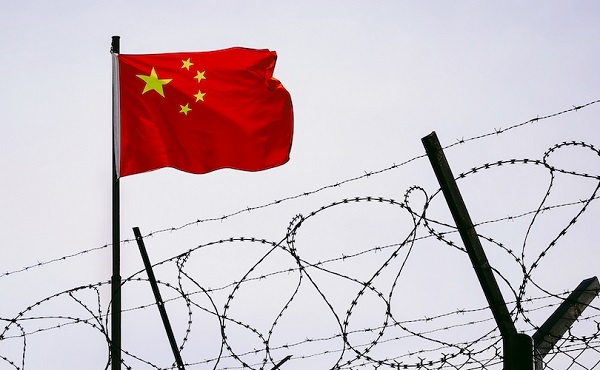Business
Canada falling behind on tax competitiveness

The Canadian Taxpayers Federation is calling on politicians to prioritize tax relief in response to the 2024 International Tax Competitiveness Index, which shows Canada’s tax system is becoming less competitive.
“Canada is falling behind many of our peers on tax competitiveness and this report should be a five-alarm siren to stop hiking taxes,” said Franco Terrazzano, CTF Federal Director. “Canadians know our economy is not firing on all cylinders and that’s because our governments are taking too much money from families and businesses.”
The Tax Foundation’s 2024 International Tax Competitiveness Index compares tax systems for 38 countries that belong to the Organization for Economic Co-operation and Development.
Key findings from the report include:
- Canada ranked 17th (out of 38) on overall tax competitiveness, which is two spots worse than last year’s rank
- Canada ranked 31st on individual tax competitiveness
- Canada ranked 26th on business tax competitiveness
- Canada ranked 25th on property tax competitiveness
- Canada ranked 8th on consumption tax competitiveness
Weaknesses of Canada’s tax system include taxing capital gains “well above” the OECD average, higher business taxes than the OECD average and implementing a digital services tax, according to the report.
“This report shows high capital gains taxes are a reason Canada is falling behind on tax competitiveness and it’s more proof Prime Minister Justin Trudeau is wrong to hike capital gains taxes,” Terrazzano said. “We need politicians to encourage success in Canada and stop punishing our doctors, entrepreneurs and people saving for retirement.”
The report notes “some strengths of the Canadian tax system” include the fact “Canada does not levy wealth, estate, or inheritance taxes.”
“A bright spot for Canada’s competitiveness is that we don’t have a wealth tax and politicians should avoid this damaging tax,” Terrazzano said. “Instead of more government spending, politicians should let families and businesses keep more of their money to grow the economy.”
You can find the Tax Foundation’s 2024 International Tax Competitiveness Index here.
Business
Largest fraud in US history? Independent Journalist visits numerous daycare centres with no children, revealing massive scam

A young journalist has uncovered perhaps the largest fraud scheme in US history.
He certainly isn’t a polished reporter with many years of experience, but 23 year old independent journalist Nick Shirley seems to be getting the job done. Shirley has released an incredible video which appears to outline fraud after fraud after fraud in what appears to be a massive taxpayer funded scheme involving up to $9 Billion Dollars.
In one day of traveling around Minneapolis-St. Paul, Shirley appears to uncover over $100 million in fraudulent operations.
🚨 Here is the full 42 minutes of my crew and I exposing Minnesota fraud, this might be my most important work yet. We uncovered over $110,000,000 in ONE day. Like it and share it around like wildfire! Its time to hold these corrupt politicians and fraudsters accountable
We ALL… pic.twitter.com/E3Penx2o7a
— Nick shirley (@nickshirleyy) December 26, 2025
Business
“Magnitude cannot be overstated”: Minnesota aid scam may reach $9 billion

Federal prosecutors say Minnesota’s exploding social-services fraud scandal may now rival nearly the entire economy of Somalia, with as much as $9 billion allegedly stolen from taxpayer-funded programs in what authorities describe as industrial-scale abuse that unfolded largely under the watch of Democrat Gov. Tim Walz. The staggering new estimate is almost nine times higher than the roughly $1 billion figure previously suspected and amounts to about half of the $18 billion in federal funds routed through Minnesota-run social-services programs since 2018, according to prosecutors. “The magnitude cannot be overstated,” First Assistant U.S. Attorney Joe Thompson said Thursday, stressing that investigators are still uncovering massive schemes. “This is not a handful of bad actors. It’s staggering, industrial-scale fraud. Every day we look under a rock and find another $50 million fraud operation.”
Authorities say the alleged theft went far beyond routine overbilling. Dozens of defendants — the vast majority tied to Minnesota’s Somali community — are accused of creating sham businesses and nonprofits that claimed to provide housing assistance, food aid, or health-care services that never existed, then billing state programs backed by federal dollars. Thompson said the opportunity became so lucrative it attracted what he called “fraud tourism,” with out-of-state operators traveling to Minnesota to cash in. Charges announced Thursday against six more people bring the total number of defendants to 92.
BREAKING: First Assistant U.S. Attorney Joe Thompson revealed that 14 state Medicaid programs have cost Minnesota $18 billion since 2018, including more than $3.5 billion in 2024 alone.
Thompson stated, "Now, I'm sure everyone is wondering how much of this $18 billion was… pic.twitter.com/hCNDBuCTYH
— FOX 9 (@FOX9) December 18, 2025
Among the newly charged are Anthony Waddell Jefferson, 37, and Lester Brown, 53, who prosecutors say traveled from Philadelphia to Minnesota after spotting what they believed was easy money in the state’s housing assistance system. The pair allegedly embedded themselves in shelters and affordable-housing networks to pose as legitimate providers, then recruited relatives and associates to fabricate client notes. Prosecutors say they submitted about $3.5 million in false claims to the state’s Housing Stability Services Program for roughly 230 supposed clients.
Other cases show how deeply the alleged fraud penetrated Minnesota’s health-care programs. Abdinajib Hassan Yussuf, 27, is accused of setting up a bogus autism therapy nonprofit that paid parents to enroll children regardless of diagnosis, then billed the state for services never delivered, netting roughly $6 million. Another defendant, Asha Farhan Hassan, 28, allegedly participated in a separate autism scheme that generated $14 million in fraudulent reimbursements, while also pocketing nearly $500,000 through the notorious Feeding Our Future food-aid scandal. “Roughly two dozen Feeding Our Future defendants were getting money from autism clinics,” Thompson said. “That’s how we learned about the autism fraud.”
The broader scandal began to unravel in 2022 when Feeding Our Future collapsed under federal investigation, but prosecutors say only in recent months has the true scope of the alleged theft come into focus. Investigators allege large sums were wired overseas or spent on luxury vehicles and other high-end purchases. The revelations have fueled political fallout in Minnesota and prompted renewed federal scrutiny of immigration-linked fraud as well as criticism of state oversight failures. Walz, who is seeking re-election in 2026 after serving as Kamala Harris’ running mate in 2024, defended his administration Thursday, saying, “We will not tolerate fraud, and we will continue to work with federal partners to ensure fraud is stopped and fraudsters are caught.” Prosecutors, however, made clear the investigation is far from finished — and warned the final tally could climb even higher.
-

 Bruce Dowbiggin2 days ago
Bruce Dowbiggin2 days agoBe Careful What You Wish For In 2026: Mark Carney With A Majority
-

 Business16 hours ago
Business16 hours agoLargest fraud in US history? Independent Journalist visits numerous daycare centres with no children, revealing massive scam
-

 Energy2 days ago
Energy2 days agoNew Poll Shows Ontarians See Oil & Gas as Key to Jobs, Economy, and Trade
-

 Business17 hours ago
Business17 hours ago“Magnitude cannot be overstated”: Minnesota aid scam may reach $9 billion
-

 Alberta2 days ago
Alberta2 days agoAlberta project would be “the biggest carbon capture and storage project in the world”
-

 Business2 days ago
Business2 days agoSocialism vs. Capitalism
-

 Censorship Industrial Complex14 hours ago
Censorship Industrial Complex14 hours agoUS Under Secretary of State Slams UK and EU Over Online Speech Regulation, Announces Release of Files on Past Censorship Efforts
-

 Energy1 day ago
Energy1 day agoCanada’s debate on energy levelled up in 2025



